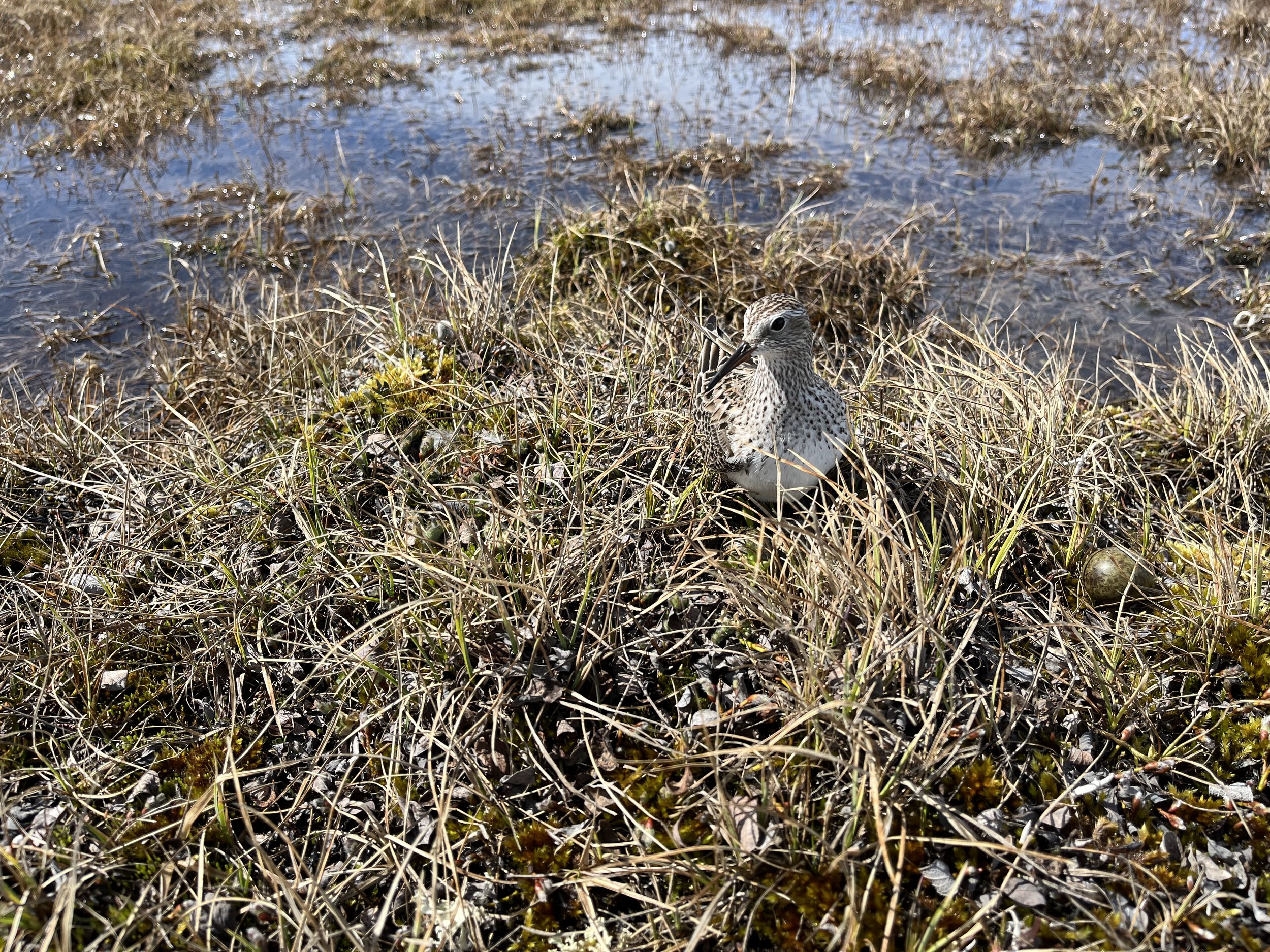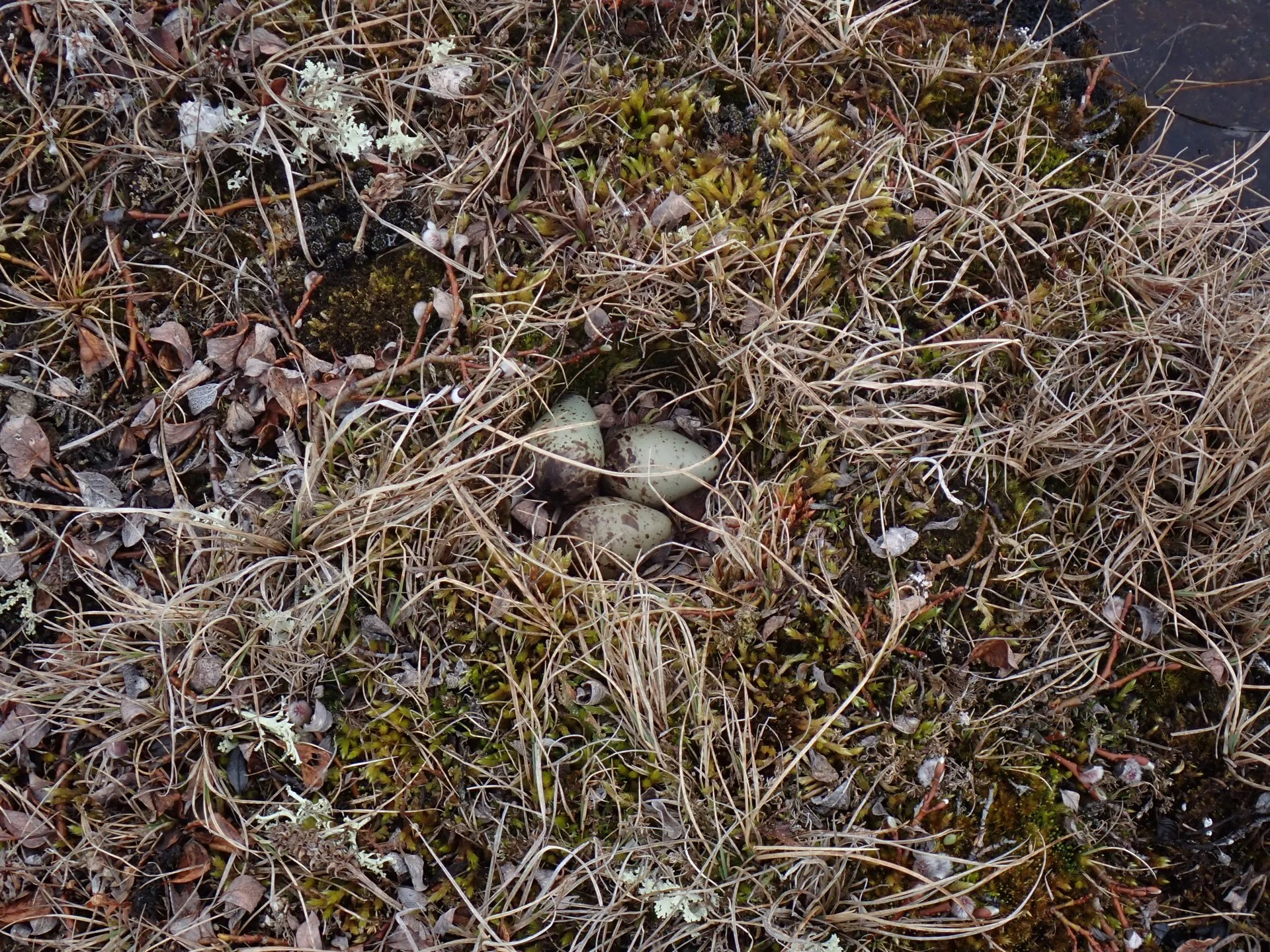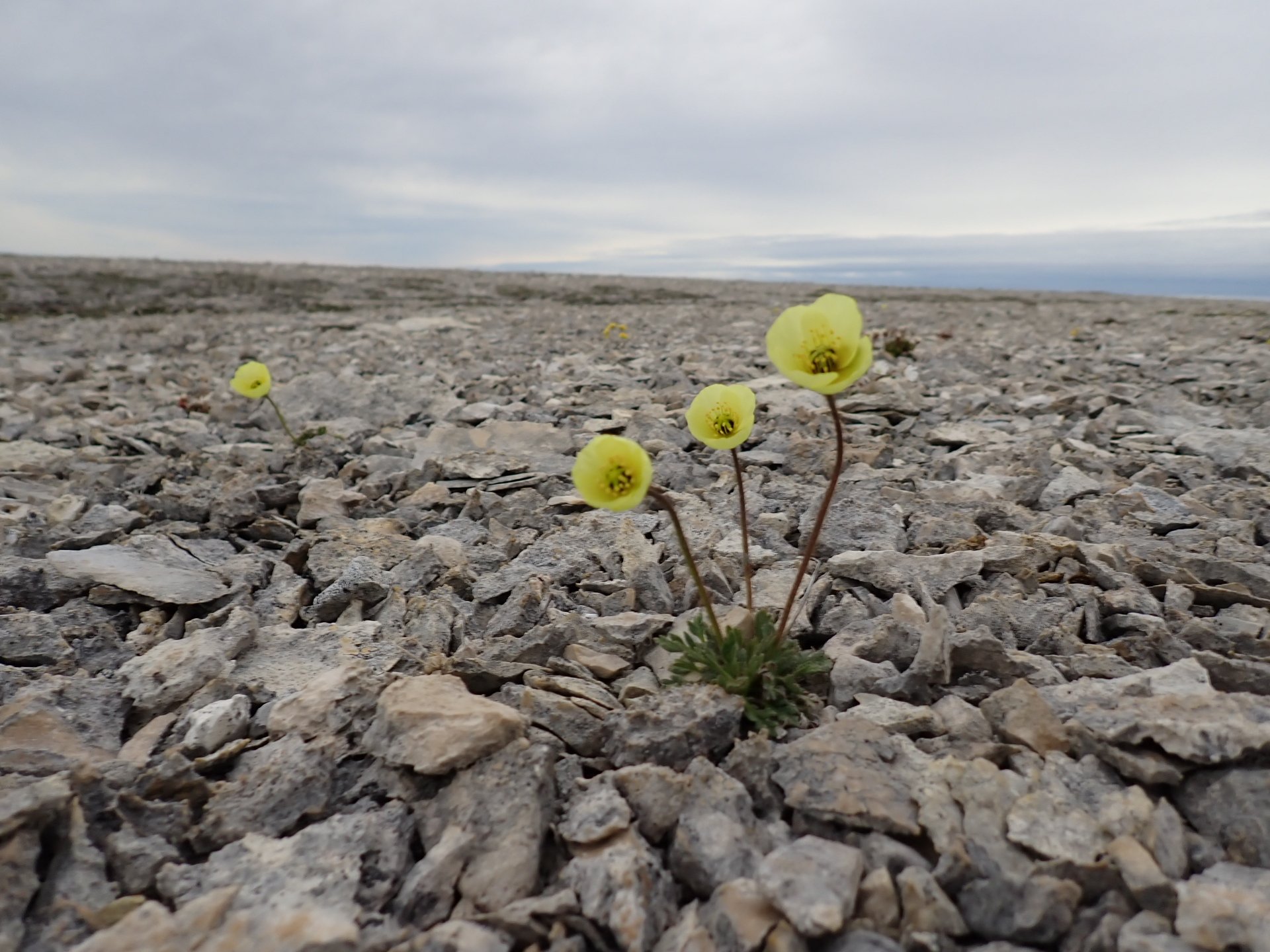Modelling wildlife distributions in Inuit Nunangat
Inuit Nunangat is experiencing warming at rates four times the global average.
This climate warming is causing shifts in species ranges, habitats, and food webs. To take effective biodiversity conservation action, estimating the size and distribution of wildlife populations can help us detect species declines. However, conducting fieldwork in Inuit Nunangat is often infeasible, so baseline information is limited for most taxonomic groups, especially arthropods. Even with long-term survey efforts like the Program for Regional and International Shorebird Monitoring (PRISM), questions remain about how to use available data to best predict the size and range of wildlife populations. Modern analytic techniques can use species co-occurrence to improve our knowledge of wildlife distributions, maximizing the benefits of sparse data for difficult-to-detect species.
In partnership with Environment and Climate Change Canada, this project will use hierarchical modeling techniques to investigate how community composition influences the distribution and abundance of shorebirds and arthropods across Inuit Nunangat. We aim to maximize the impact of the valuable data available to inform and guide effective biodiversity conservation in the Arctic.




